#My Movie Odyssey
Photo
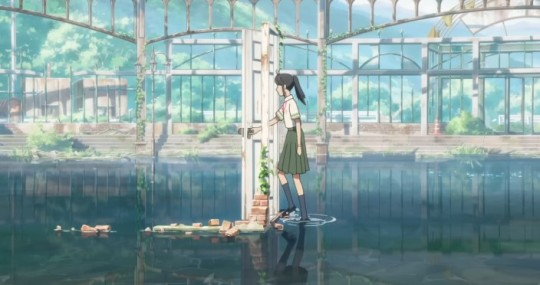
Suzume (2022, Japan)
How dramatic Makoto Shinkai’s rise has been. The Japanese animator and filmmaker, with his background in video game animation, is far away from the narrative and editing incoherence that plagued his early works, such as The Place Promised in Our Early Days (2004) and 5 Centimeters Per Second (2007). At first, neither film made viewers outside Japan take much notice. A decade later, Your Name (2016) commercially rocketed past all Shinkai films before it and, before one knew it, would go on to surpass Spirited Away (2001) as the highest-grossing anime of all time. The body-switching romantic comedy remains Shinkai’s best film, although Suzume comes much closer than I expected.
In my write-up to Your Name after its North American release, I speculated that the film’s success in Japan might be due to its allusions to the 2011 earthquake and tsunami off the coast of northern Honshu, the Tôhoku region – potentially some sort of cinematic catharsis. Though the imagery that Shinkai employed in Your Name would be unmistakable to any Japanese person who witnessed the destruction of that day, he invoked those images seemingly for the sake of aesthetic appeal. So too was this the case for Weathering with You (2019) – a film that drowned Tokyo in constant rain in service of an epochally selfish decision in pursuit of teenage romance. As such, Shinkai’s insistence to this day that Weathering with You is a film about climate change collapses entirely in the film’s finale. Suzume doubles down on Shinkai’s shtick for teen romance and obsession for how light reflects off water, but now he has made a film where the repercussions of the Tôhoku earthquake and tsunami and the subsequent Fukushima Daiichi nuclear disaster are front and center. This is his most honest film.
17-year-old Suzume Iwato (Nanoka Hara; Akari Miura as a young girl) lives with her aunt (Eri Fukatsu) on Kyūshū, the southernmost of the major Japanese islands. On the way to school one day, she passes by an attractive, long-haired fellow named Sôta Munataka (Hokuto Matsumura) who asks about local ruins. She points the way to an abandoned onsen, and – following her romantic longings rather than common sense – follows him. At the onsen, she finds a door, standing alone without supports. After she removes a totem that transforms into a cat (Ann Yamane) that scurries away, the door leads to a grassy field, with picturesque blues and reds streaking across a starlit sky. Arriving at school later, she later notices that something resembling a gigantic red worm is emanating from the door’s location. She rushes back, noticing Sôta struggling to close the door, and lends a hand to shut and lock the door – but not without the worm (which no one except these two can see) crashing to the ground and causing a sizable earthquake. Sôta explains he is a “closer” – part of a line of individuals who search for these doors and ensures that they remain shut. Failure to do so results in cataclysmic earthquakes. Against her aunt’s wishes, Suzume will follow Sôta northwards, towards Honshu. The cat, Daijin, must revert to a keystone in order to prevent further disaster.
A few decades into his film career, Shinkai’s undisciplined writing of his character’s emotions remains. Complicating everything is the fact that Daijin turns Sôta into something that should be inanimate. In interviews, Shinkai has defended this decision as the only way to have any sort of comic relief amid the film’s themes – a curious statement to make, as half of Suzume’s comedy has little to do with Sôta’s transformation, instead centering on our characters’ habits and flaws. The original plan was for Suzume to fall for another young woman, but producers nixed the idea, believing such a development too controversial for Japanese audiences*. Shinkai’s decision to make Sôta non-human puts Suzume on the brink of slapstick absurdity. Even though it remarkably allows some of the best character animation from a filmmaker not regarded for that (yes, character animation for an otherwise inanimate object), this absurdity can occasionally deprive Suzume of some much-needed pathos. Only in the Suzume’s final third does that pathos become apparent, and it arrives less powerfully than it should because of Shinkai’s decision to transform Sôta.
Combined with Suzume’s tendency to make hormone-influenced decisions during both the quieter and most perilous moments of her journey with Sôta – I am all for female characters having romantic agency, but there are times and places for when expressing or acting upon romantic feelings is appropriate – Shinkai’s teenage romantic writing can feel tactless at worst, tacky at best. Yet, because Shinkai is upfront about Suzume’s desires from the beginning (unlike the does-he-love-her-or-doesn’t-he-love-her waffling in Your Name and Weathering with You), it makes Suzume’s finale less baffling than his previous two works. Concerningly, in Your Name and Weathering with You, a natural disaster is an inconvenience to two teenagers barely realizing their love for each other. Not this time, thankfully, because of Suzume’s forwardness.
Suzume’s success comes from the tradition of live-action Japanese cinema to reflect – whether directly or otherwise – on national tragedy. When the United States ended its postwar occupation of Japan in April 1952, it also halted the censorship of topics such as the occupation itself, World War II, and other topics that the censors might object to. One could read the previous sentence and draw rash conclusions: namely, that American censorship shackled Japanese artistry. Perhaps it did, but plenty of exceptions exist, such as Yasujirô Ozu’s entire post-War filmography (even during the occupation). In Ozu’s post-War films, the families in those works quietly observe or accept the gradual Westernization of their culture, most evident in changes in nuptial and familial norms, and articulated with subtle, but great artistry. Censors have a way in sometimes making art’s politics less didactic – no less powerful, much more palatable. Now without American censors, films like Gojira (or Godzilla; 1954), Twenty-Four Eyes (1954), and The Burmese Harp (1956) wrestled with the morality of WWII, the apocalyptic consequences of nuclear weapons, and Japan’s war crimes inflicted upon its Asian neighbors (over the last few decades, Japanese filmmakers have become increasingly hesitant to engage in the last topic).
On March 11, 2011, a 9.0 or 9.1 earthquake struck off the east coast of Tôhoku. The resulting tsunami killed thousands and displaced hundreds of thousands, as well as triggering a nuclear meltdown at the Fukushima Daiichi Nuclear Power Plant. On 3/11 and the days after, images of the ocean swallowing buildings whole, boats now perched atop half-ruined rooftops, and clocks frozen at 3:25 PM made their way around a now-interconnected world. No sense can ever be made of nature’s randomness, and the loss of life in its wake. Suzume is a film that understands this, long before Shinkai truly shows what his film is about (accepting past tragedy and trauma) and what it champions (living life completely). Before we fully learn about Suzume’s loss on 3/11, Shinkai is content to introduce us to partake in some narrative detours. Those detours introduce the audience to side characters living their lives humbly, with little fanfare, and a joie de vivre. Notice the joy of the motorcycle-riding produce seller, content with the verdant beauty of her home and the rural simple living. The laid-back and unfussy Tomoya Serizawa (Ryūnosuke Kamiki; whose character is Sôta’s best friend) takes each day as is as he attempts to earn a teaching credential. Until then (and I suspect even after he becomes a teacher), he enjoys cruising along in his convertible, blasting a Spotify playlist with playful oldies such as Yumi Arai’s “Rūju no Dengon” (a familiar tune to fans of 1989’s Kiki’s Delivery Service), Yuki Saito’s “Sotsugyô”, among others.
These detours contrast with a device (that Shinkai also uses) more characteristic of Japanese cinema, or at least most Japanese cinema that has been exported to the West. That device is mono no aware (“the impermanence of things”) – with practitioners including some of the greatest Japanese filmmakers of all time such as Ozu and Isao Takahata (1988’s Grave of the Fireflies, 2014’s The Tale of the Princess Kaguya). This refers to character behaviors or individual shots that emphasize how life is fleeting and precious. In that contrast of Suzume’s loss and the joyfulness of her companions, there is an implicit understanding that Japanese culture, as our characters know it, is disappearing (one might say “transforming”). It is there in the beautifully-drawn abandoned buildings – the onsens, the schoolhouses – alluding to Japan’s demographic changes, as well as the implication that there are fewer “closers” in Japan than there used to be. For an economy once pegged to lead the future in Asia, Japan’s stagnant financial reality is reflected in the supporting cast, all of whom are hardscrabble folks neither struggling nor prospering. Sometimes that change happens suddenly, as what happened to Suzume on 3/11, leaving behind a towering sea wall and imprints of former homes as nature reclaims these once-devastated places.
The trick, Shinkai says, is to acknowledge the tragedies of the past, for all its effects on the present. At the same time, one must press forward, to live as completely as possible in the days we have afforded to us. As simple as that may be to articulate verbally or cinematically, it is a much different proposition in practice, on both counts. If Suzume presented this message inelegantly, the film would be a maudlin exercise. Touch too lightly on these themes, and the film drowns in its heavily expository dialogue. Shinkai may too fervently focus on the romantic and the comedic in spurts, but Suzume eventually upholds the film’s ultimate thesis, so that Suzume can find true happiness today and in the future while in full acceptance of her past.
youtube
With any Makoto Shinkai film post-Your Name, one expects the band RADWIMPS to score the film and provide a wealth of original songs. This time, the lone notable song is the title number, “Suzume”, and it only appears in full during the end credits, rather than the characteristic Shinkai-esque montage. Performed by RADWIMPS and featuring the TikTok singer Toaka on vocals, the sixteen-note motif in “Suzume” (even when Toaka is on vocals and not vocalizing the motif, the motif is played as the harmonic line) is a hypnotically memorable idea that serves as Suzume’s motif for the film’s entirety. Together, RADWIMPS and co-composer Kazuma Jinnouchi (Halo 5: Guardians and “The Ninth Jedi” from Star Wars: Visions; like Shinkai, Jinnouchi got his start in the video game industry) craft a gorgeous score unafraid to mix styles and instrumentations.
The action scoring as heard in “Abandoned Resort” makes full use of Japanese instruments and an ominous choir on top of orchestra – lending the scene that it accompanies an immediate tension that bolsters the sense of danger in closing the door. Similar orchestrations in the other door-closing scenes are likewise as effective as this. In other moments, a wildly jazzy “Cat Chase” sets the pace for a chaotic pursuit early in the film, all while adding to the scene’s hilarity. A simple conversation between piano and strings such as in “Time for Two” introduces secondary romantic motifs for those moments when the action slows down and Suzume has Sôta on her mind. But perhaps the most effective musical moment occurs while our two leads are in Tokyo, and Suzume makes the decision to return home in “Suzume’s Departure”. It might not be the most musically interesting cue, but RADWIMPS and Jinnouchi’s restraint to delay Suzume’s motif until absolutely necessary pays off in emotional dividends that only film music can accomplish. By some distance, this is the most beautifully scored and fascinatingly orchestrated film in Shinkai’s filmography, and a stunning achievement for RADWIMPS and Jinnouchi.
There is no doubting that Makoto Shinkai is one of the most important filmmakers in Japan at this moment. He is the figurehead for a generation of directors for whom anime has always been their foremost cultural influence – with all the strengths and substantial limitations that entails. And like those he succeeds but does not quite emulate (Ozu and his contemporaries, but more closely the likes of Hayao Miyazaki and the late Takahata), Shinkai has made a film grounded upon the aftermath of a national disaster. For the first time, those intentions and allusions are clear. The directness of feeling in Suzume is a refreshing change for him, granting the film an emotive sincerity that none of his previous works can match. Indeed, some of his expository, romantic, and comedic writing threatens to render his work as tasteless. Yet with utter conviction in his writing and filmmaking, Shinkai presents that the goodwill and kindness of others is essential following tragedy. I might take issue with Shinkai’s approach, but I have no arguments there. Following the footsteps of great directors and their films in the years after another national calamity, Suzume, though imperfect, is Shinkai at his most humanistic.
My rating: 7.5/10
^ Based on my personal imdb rating. My interpretation of that ratings system can be found in the “Ratings system” page on my blog (as of July 1, 2020, tumblr is not permitting certain posts with links to appear on tag pages, so I cannot provide the URL). Half-points are always rounded down.
* Broadly, Japanese society is not hostile towards LGBTQ+ persons. However, the nation’s politics – which have long been defined by remarkably low participation rates for an industrialized democracy, especially from younger generations – is conservative on queer rights. The ruling Liberal Democratic Party (LDP) has been in power almost continuously since its founding in 1955, and the party has always been against same-sex marriage.
For more of my reviews tagged “My Movie Odyssey”, check out the tag of the same name on my blog.
#Suzume#Suzume no Tojimari#Makoto Shinkai#Koichiro Ito#Genki Kawamura#Nanoka Hara#Akari Miura#Hokuto Matsumara#Eri Fukatsu#Shota Sometani#Sairi Ito#Kotone Hanase#Kana Hanazawa#Matsumoto Hakuo II#Ann Yamane#RADWIMPS#Kazuma Jinnouchi#Toaka#My Movie Odyssey
15 notes
·
View notes
Text
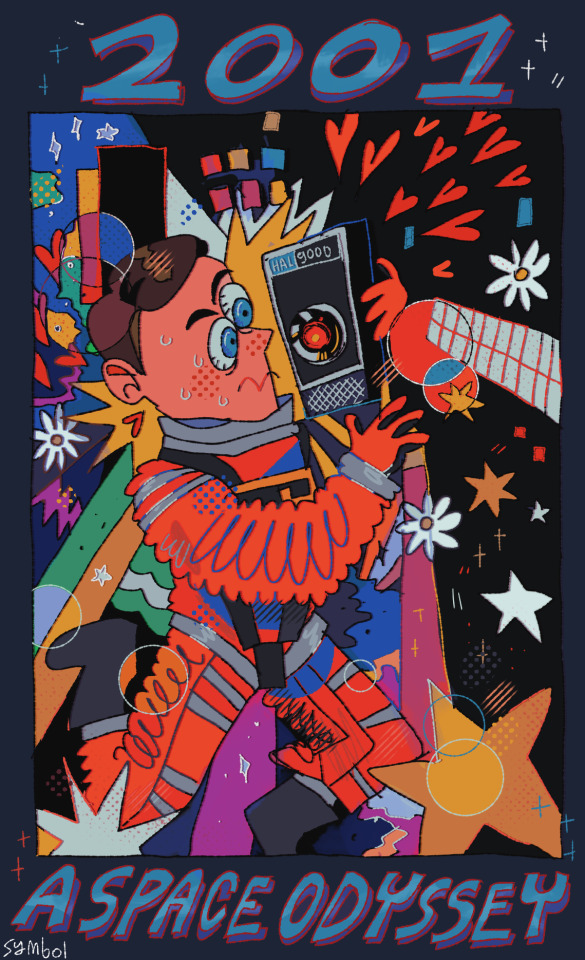
I'm half crazy all for the love of you!
#THIS MOVIE RUINED MY FUCKING LIFE#LIKE DUUUDEEEEE .DUDEEEE#2001 a space odyssey#2001 aso#hal 9000#dave bowman#symb art#I FEEL INSANE
2K notes
·
View notes
Text
so for nanowrimo this year i decided to not write a novel but instead write a screenplay for my dream project, A MUPPET ODYSSEY, which is homer’s odyssey but it’s muppets, a la muppet christmas carol. i didn’t finish it :( but here's some of it.
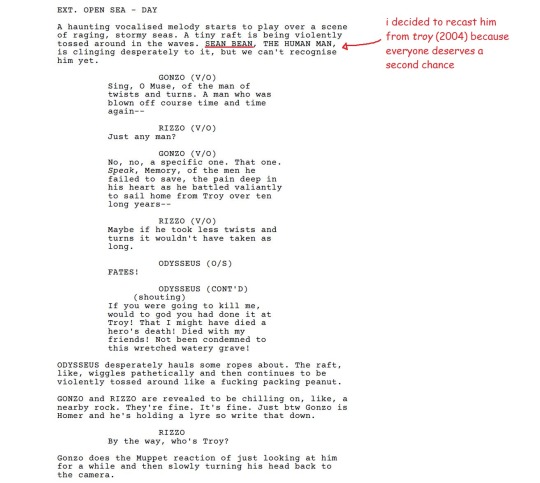

that’s from the teaser. this is the first scene:
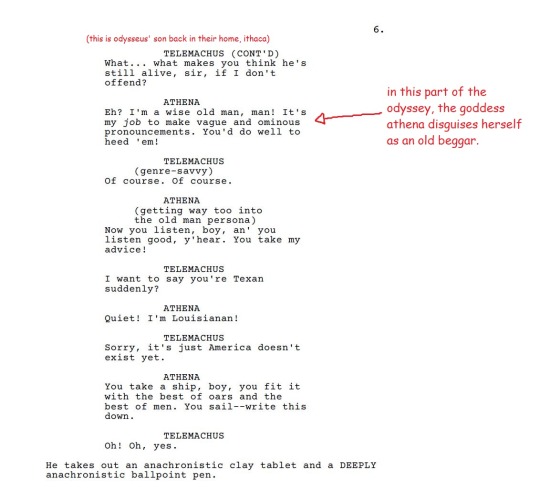
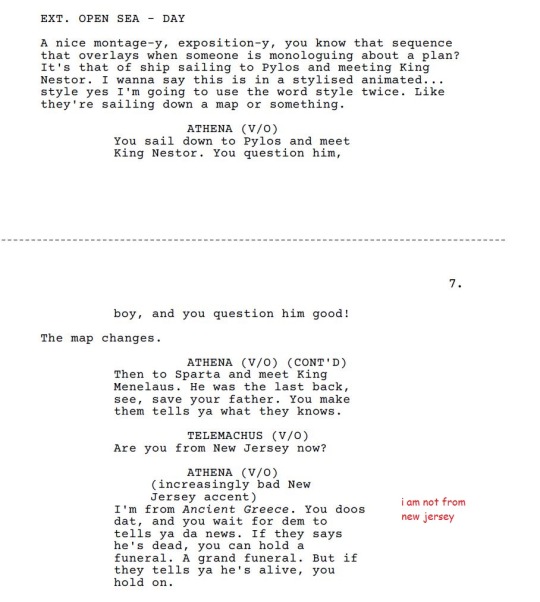
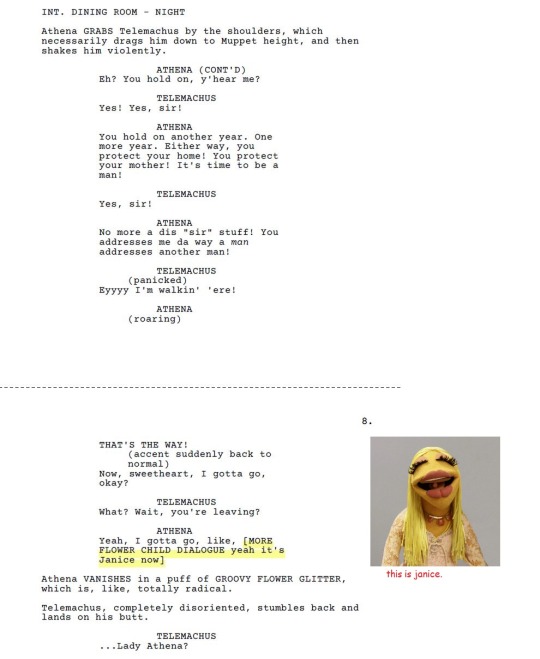

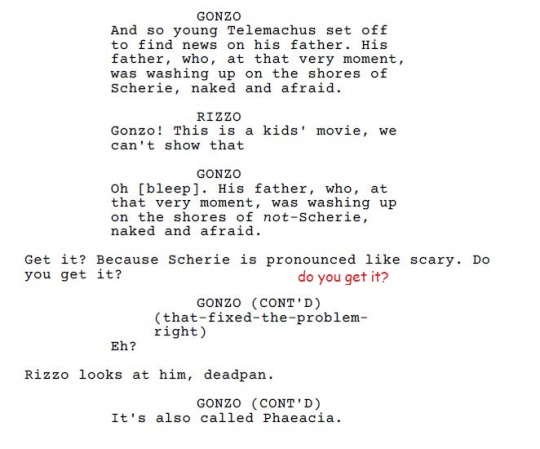
odysseus makes it to the castle in phaeacia:

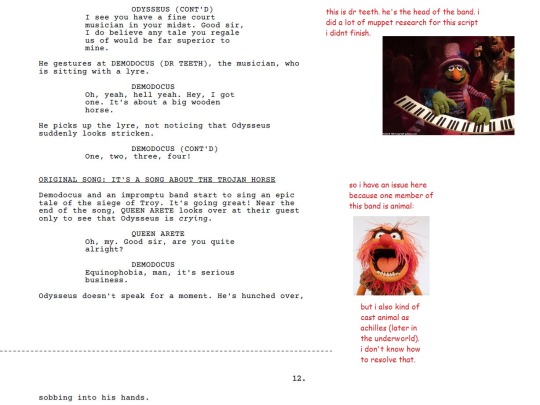
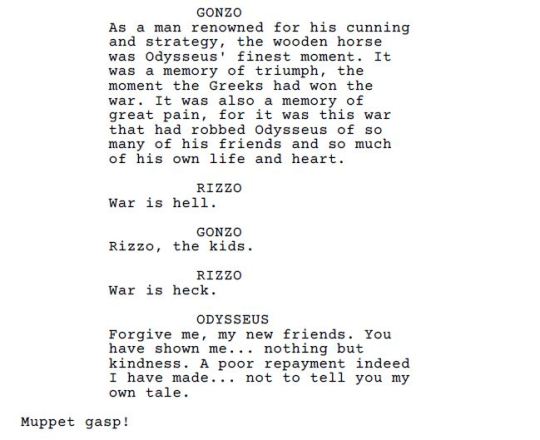

thanks for reading a muppet odyssey. if you enjoyed please hit that subscribe button and petition disney to let me write a muppet odyssey
#odyssey#tagamemnon#sorryfro using the classics tag for muppets#muppets#rookposting#long post#i deeply from the bottom of my heart believe muppet movie is the perfect way to tell the odyssey
9K notes
·
View notes
Text


homework :D
#art#animation#class hw#odysseus#the odyssey#greek mythology#clinging onto my sanity by drawing odysseus for midterms#tagamemnon#anyways this is my petition to studios to let me make an animated movie of the odyssey please and thank you
3K notes
·
View notes
Photo

I finished playing Mario Odyssey!
Many moments reminded me of when I played Mario Galaxy for the first time ;; pure nostalgia. (Ahhh simpler times)
---------
Also, a little bit of spam but I OPENED COMMISSIONS! :D check out my carrd for more info -> https://p1nkmic.carrd.co/
#Princess Peach#mario odyssey#super mario bros#fanart#mario fanart#my art#super mario#mario bros#nintendo fanart#nintendo#she looked so pretty#mario movie
3K notes
·
View notes
Photo

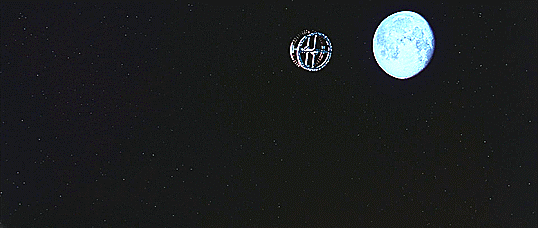





Near Future NASA on film part 2: Design Antecedents, More Next Generation Shuttles, and Shuttle-adjacent
1. Planet of the Apes’ spaceship
2. 2001: A Space Odyssey’s Pan Am space plane
3. The Fifth Element’s passenger spaceship*
4. Event Horizon’s Lewis and Clark rescue ship
5. Red Planet’s orbiter
6. The Time Machine’s lunar orbiter
7. Avatar’s Heavy Shuttle*
* not near future but the design evolution is there
#NASA#movies#scifi#space shuttle#space ship#spaceship#I wasn't sure I'd put Lewis and Clarke in there but it fits...somewhat#spaceshipedit#filmedit#GIF#my gifs#Planet of the Apes#2001 A Space Odyssey#The Fifth Element#Event Horizon#Red Planet#The Time Machine#Avatar#again part of a set I had planned last year and did 2 gifsets and moved on
709 notes
·
View notes
Text


✩ King bowser gijinka ! came up with this design for him when the movie trailers first dropped x3✨✨ love this big guy ❤️💚
✩ hope y’all like this design for him ✌🏻😊✨
#nintendo#nintendo art#king bowser#bowser#bowser fanart#super mario bros#mario fanart#mario bros#mario bros fanart#king koopa#mario odyssey#mario sunshine#gijinka#bowser gijinka#king bowser gijinka#mario movie#super mario fanart#super mario movie#super mario galaxy#my art 🍰
852 notes
·
View notes
Text

2001
#2001 a space odyssey#2001#hal 9000#david bowman#what if i said hints of haldave what then#old man robot yaoi <3#anyway#i love this movie to death everyone should go watch it#my art
177 notes
·
View notes
Text

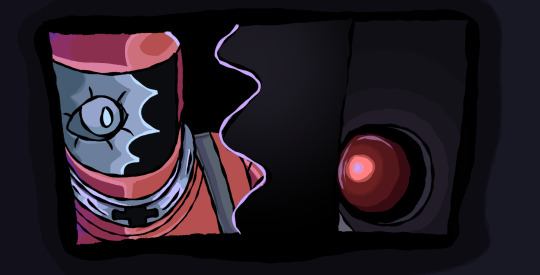
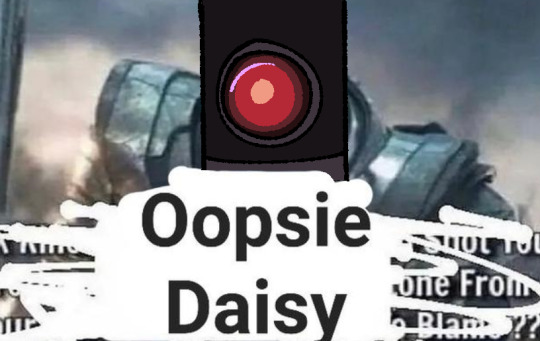
assorted space odyssey things. can you tell im normal about that series
#literally all ive been able to think about for a week straight. this space yaoi shit gets serious#idk if anyone who follows me here is a 2001head minus You know who you are but idc. look at these guys ok?#2001 a space odyssey#2001 aso#2010 the year we make contact#<- had that specific movie on my mind while drawing that first piece#david bowman#hal 9000#halman
253 notes
·
View notes
Text

i wasnt made to do everything… i was made to do ANYTHING !!
#joshii's art#my art#digital art#dimension 20#d20#a starstruck odyssey#aso#sundry sidney#literally the perfect personification of the barbie to ever come out a full year prior to the movie coming out
264 notes
·
View notes
Text
Everyone wants to marry Geno

You do too, don’t lie!
#artists on tumblr#artist#digital art#artwork#cartoon artist#digital artist#my art#art#fan art#Mario#Mario rpg#super Mario rpg#geno x mario#geno super mario rpg#geno mario#mario art#Mario fanart#mario movie#mario odyssey#super mario#bowser x geno#geno x bowser#geno smrpg#Geno x princess peach#Geno x peach#Geno x bowser#bowser x Geno#bowser
134 notes
·
View notes
Text
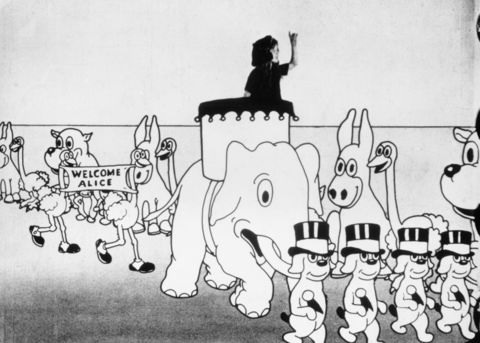
Alice's Wonderland (1923 short)
One hundred years ago today, Walt Disney screened to Margaret Winkler his hybrid animated/live-action short film, Alice’s Wonderland. If the name Margaret Winkler is unfamiliar to you, that is in part due to the fact that much of Hollywood’s mythmaking has obfuscated the impact of certain female creatives during the silent film era. A former secretary to Harry Warner at Warner Bros., Winkler was the premier animated short film executive in the early and mid-1920s. Her company, M.J. Winkler Pictures, flourished at a time before the oligopoly of the soon-to-be-major Hollywood studios, mostly on the backs of Pat Sullivan and Otto Messmer’s Felix the Cat series. At the peak of Felix’s popularity in 1923, a series of arguments between Winkler and Sullivan/Messmer soon meant Winkler was looking for an animated series to replace Felix. She would also be losing the rights to Max and Dave Fleischer’s Out of the Inkwell series, starring Koko the Clown. By the end of 1923, Winkler would sign a deal with Disney to distribute the Alice Comedies.
Impressed by the handiwork of Alice’s Wonderland, Winkler’s deal gave Walt Disney a much-needed infusion of cash. Disney, who founded Laugh-O-Gram Studios in Kansas City, Missouri in 1921, had just barely emerged from Laugh-O-Gram’s bankruptcy. Instead of heading to the then-center of the American animation world of New York City, Walt instead found himself in Los Angeles, partly to help his brother, Roy O. Disney, recover from tuberculosis.
Though a continent away from the major animation players in the U.S. at the time, Disney nevertheless took inspiration from those figures – Bray Productions under John Randolph Bray and especially the animator Winsor McCay (who, by 1921, was forced by employer William Randolph Hearst to stop working on animated film). McCay and Bray were pioneers in gifting animated characters basic personalities and the development of those personalities, growing animated cinema beyond modest gag comedy and simplistic figures. McCay’s Little Nemo (1911) and Gertie the Dinosaur (1914) and Bray’s Bobby Bumps series (1915-1925) may seem quaint to modern audiences, but these films were wildly popular across North America and were instrumental stepping stones to the explosion of American animated innovation in the late 1920s and 1930s.
Alice’s Wonderland was never screened for the public, but it nevertheless spawned a series that lasted for fifty-seven short films. None of it would have been possible without the inspiration Disney and his animators took from the most acclaimed American animation at that time.
With no relation to Lewis Carroll’s two Alice books, Alice’s Wonderland stars Virginia Davis as the title character. Davis, as Alice, is four years old at the beginning of the Alice Comedies series. She visits the animation studio where she sees Walt Disney in the process of drawing some “funnies”. As she sits down, the cartoons on the drawing pages come to life. Most important among those animated figures is Julius the Cat, created by Disney and Ub Iwerks and a predecessor to Oswald the Lucky Rabbit and Mickey Mouse (unlike Oswald and Mickey, Julius has not appeared in an animated film since the silent era). Walt then brings Alice into the animators’ room, where Ub Iwerks, Hugh Harman and Rudolf Ising, and others are also enjoying their work acting out various scenarios (remember those names – we will mention them again later). Alice, still giddy after her visit to the animators’ studio, later drifts off to sleep that evening. And, after dozing off, she finds herself welcome to a Cartoonland of her dreams.
At the time, Alice’s Wonderland was the reverse of what the Fleischers’ Out of the Inkwell series and some of the Bray and McCay shorts attempted. Instead of animated characters inhabiting a live-action world, we have here a live character traipsing around in an animated world. In some of the hybrid animated/live-action short films at the time, the reactions of the characters can be noticeably off. Not so much here. Davis’ reactions to the animated animals are timed with admirable precision. But given the technological constraints at the time and how small Walt Disney’s animators’ team was, Alice’s Wonderland makes heavy use of recycled or looped animation. Viewers who know their Looney Tunes or Hanna-Barbera works probably recognize the effects of a wraparound background and identical walking animation. The effects tend to make certain scenes – such as Alice’s celebratory procession during her dream – last several seconds too long.
youtube
Yet, Alice’s Wonderland still charms. With synchronized sound still four years away, the animators of the early twentieth century set the visual slapstick language that continues to course through modern animated cinema. Julius’ hidden fight with a dog within the latter’s doghouse, an animator using a pen holder as a de facto boxing bell, and a hungry lion cleaning and sharpening his teeth are just previews to the absurd humor that will define the next few decades of American animated short films. So too the tubular limbs from the animated characters. The film’s humor came not just from the films of Bray, McCay, and the Van Beuren Studios, but also the comic strips popular at this time – titles which probably read as quite unfamiliar to most today: Bud Fisher’s Mutt and Jeff (1907-1983; Fisher ceased involvement in 1932), George Herriman’s Krazy Kat (1913-1944), and Winsor McCay’s Dream of the Rarebit Fiend (1904-1925). These comic strips, largely unknown quantities to yours truly while researching for this write-up, influenced the comedic pace and tone for the bulk of American animated short films – a near-forgotten legacy, and one worthy of honoring.
Alice’s Wonderland would solidify the careers of all of the animators involved – all of whom were originally based in the Kansas City area. Walt Disney and Ub Iwerks stayed onboard what would be deemed the Disney Brothers Cartoon Studio (after several name changes, it is now the Walt Disney Animation Studios of today). Disney’s namesake studio is the most visible animated studio in all of cinema, and undoubtedly the most historically and currently significant, for good and ill. For the Alice Comedies, Iwerks experimented with a “matte” – in which a cutout background would be placed over a camera lens to hide where animated figures might be. Iwerks also developed Mickey Mouse with Walt, was one of the leading hands on the Silly Symphony series, and was integral in developing the special visual effects that made animated/live-action hybrid movies like Song of the South (1946) and Mary Poppins (1964) as convincing as they are.
Hugh Harman and Rudolf Ising, who developed the story of Alice’s Wonderland alongside Walt, honed their craft under him. But after Disney sold the rights to Oswald the Lucky Rabbit to Universal in 1928 in a dispute with Winkler’s husband, producer Charles Mintz, Harman and Ising’s time with Disney came to an end. Now on their own, Harman and Ising created Bosko. The Bosko shorts impressed Warner Bros.’ Leon Schlesinger and, in 1930, the trio founded the Looney Tunes and Merrie Melodies series. Harman and Ising would eventually leave Warner Bros. in 1934 to develop the Happy Harmonies series for Metro-Goldwyn-Mayer alongside William Hanna. Animator Isadore “Friz” Freleng also followed Harman and Ising to Warner Bros. and MGM, and was central to the creation of the likes of Porky Pig, Sylvester, and Yosemite Sam. Also following Freleng was Carman Maxwell, who spent the bulk of his career as a production manager for MGM’s animated shorts.
Actress Virginia Davis also moved out from Kansas City to Southern California to join Disney to star in the Alice Comedies. Davis appeared in fifteen of the fifty-seven Alice Comedies, ending her tenure with Alice in the Jungle (1925). She was able to nab the occasional minor child actress role and ended her career in the 1940s as uncredited dancers or chorus girls. She married in 1943 to a Navy airman and became a real estate agent active in the areas around Irvine, California and Boise, Idaho.
Margaret Winkler could be an exacting critic to Walt Disney and his animators, but she nevertheless sent words of encouragement, making suggestions where she saw fit to the rough cuts of the films. Her critiques plus the relatively expensive cost in making an Alice short saw Disney struggle to meet deadlines at first. But when Disney was able to convince Harman and Ising to move from Kansas City to Los Angeles, the pace of production hastened. Winkler retired from the film business in 1926 after the birth of her first child, with shockingly no one thinking to interview her about her work in the silent era before her death in New York state in 1990.
The Alice Comedies, beginning with Alice’s Wonderland, set the stage for American animated film in the early and middle twentieth century. Several figures involved in the series’ animation and storytelling paved careers that would deeply impact the direction of what today is Walt Disney Animation Studios. Others, like Harman, Ising, Freleng, and Maxwell, took with them Walt Disney’s artistic vision and guidance and spread that to two of the studio’s soon-to-be rivals in MGM and Warner Bros.
A century since Walt Disney screened Alice’s Wonderland for Margaret Winkler, Walt Disney Animation Studios has grown and evolved. The modern-day studio, I will argue, does not adhere to Walt Disney’s vision of making animated movies as dramatically and emotionally powerful as any live-action movie as faithfully as it could – and, in my opinion, has not consistently done so in at least a quarter-century. But the studio, and its legacy, started humbly, just hoping to please a crowd with sharp visual gags in the wild early days of animated silent film. Such were the initial hopes of John Randolph Bray and Winsor McCay. From the Alice Comedies to the Silly Symphony shorts to Snow White and the Seven Dwarfs (1937), Walt Disney and his fellow animators added to the foundation that their predecessors built.
My rating: 7/10
^ Based on my personal imdb rating. My interpretation of that ratings system can be found in the “Ratings system” page on my blog. Half-points are always rounded down.
For more of my reviews tagged “My Movie Odyssey”, check out the tag of the same name on my blog.
#Alice's Wonderland#Alice Comedies#Walt Disney#Margaret Winkler#Hugh Harman#Rudolf Ising#Ub Iwerks#Virginia Davis#Margaret Davis#Carman Maxwell#Friz Freleng#Julius the Cat#Laugh-O-Gram Studios#Disney#Disney 100#Winsor McCay#John Randolph Bray#silent film#My Movie Odyssey
7 notes
·
View notes
Text
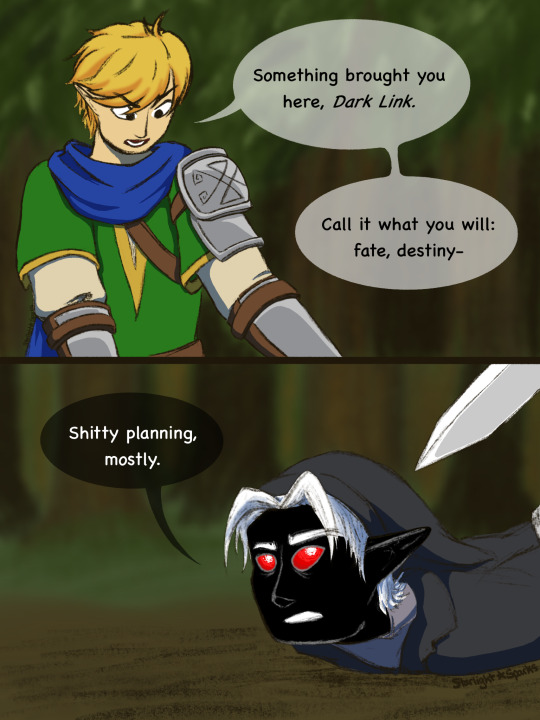
That moment when you realize the people interrogating you are very bad at it.
And here's the weekly reminder to go read A Dark Among the Lights by LuckyLectio on AO3! My phone's auto predictions can almost write out that entire sentence without prompting by now XD
Alt. version under the cut since I couldn't decide which I liked better.

#my art#dark link#lu warriors#adatl#shoutout to anyone that knows the movie being referenced#not gonna lie it's refreshing to finish a drawing so relatively quickly compared to last week's odyssey#no idea how comic arts can handle drawing so many group shots#maybe they get used to it??#anyway this chapter was very fun to read#it's fun to have all the heroes more or less present#though i bet it's probably a pain in the ass to write XD#the snarky comments will be glorious!
84 notes
·
View notes
Text
20/12/23
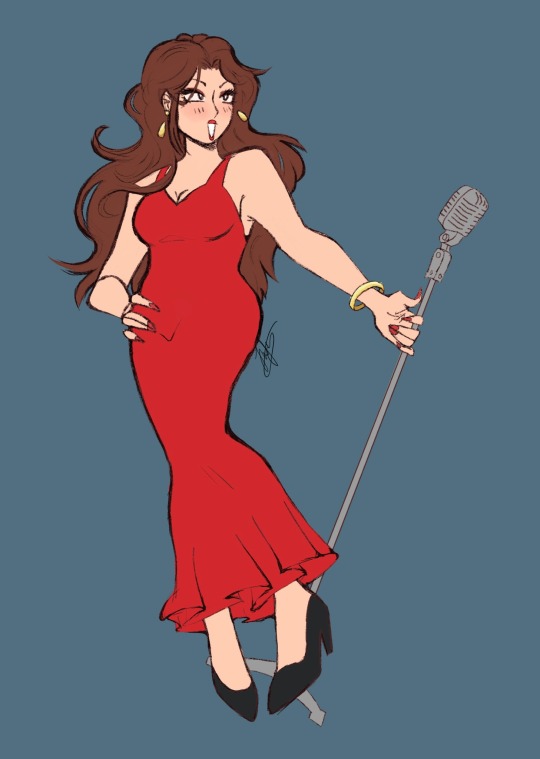
Pauline in honor of her bring added in the MK8delux dlc :D
#mayor pauline#pauline mario#mario franchise#mario fanart#mario movie#super mario bros#mario bros#super mario#mario#mario kart#mario odyssey#art#artists on tumblr#fan art#my art#digital art#digital artist#artwork
97 notes
·
View notes
Photo


Since Kubrick refused to let us have sluttified Dave on the 2001 poster I decided to make one as a parody of Forbidden Planet (never watched it, i just saw a cool robot holding a pretty lady and went aw yiss, lol)
And lemme tell ya, this fandom needs more fanart of Dave in the damsel in distress poses, also i lowkey wanna do more of these if i have time
#2001 a space odyssey#2001 aso#hal 9000#dave bowman#david bowman#2001 space odyssey fanart#2001#robots#fanart#my art#old movie poster
413 notes
·
View notes
Text

Graphic design is my passion
#Hal 9000 fanart i drew the first time i watched the movie my beloved#2001 a space odyssey#space odyssey#hal 9000#2001 aso#aso
84 notes
·
View notes